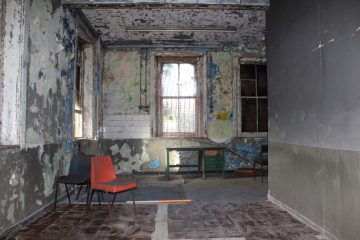The South Wales Railway (SWR) was an early main railway line that connected the Great Western Railway (GWR) near Gloucester with South Wales. Construction of the line began in 1850 and on 11th October, 1852, the line than running through Llanelli was opened. The SWR became amalgamated with the GWR in 1863. Initially a terminus was built at Neyland, Pembrokeshire to accommodate traffic from Ireland, but it was not until 1906 that the extension to Fishguard was eventually built.
The GWR undertook an extensive programme of infrastructure investment in the 1870’s, with proposals for the rebuilding of both the Railway Station and the Goods Shed at Llanelli appearing in the early 1870’s. This was a result of the substantial increase in industrial and commercial demand. Subsequently, in the period between 1875 and 1912 the Llanelli area became one of the most important centres for tinplate production in the world.
The improvement of rail facilities at Llanelli included redeveloping the existing SWR/GWR station site to accommodate a larger station. Prior to the re-building of the station, the contract for erecting the new Goods Shed was let and building work was completed by 1875. The Llanelli Goods Shed saw huge improvements in goods handling facilities. The shed is thought to have been unique along the SWR/GWR main-line in both its size, facilities and importance, as no investment on a similar scale took place elsewhere. It is believed today that all the other goods sheds, albeit of an earlier date, and some of which were Brunel-designed have been demolished.
Throughout an operational period of some 90 years, the shed and associated office block were re-configured on several occasions to meet operational requirements and technical developments. Some of the loading bays appear to have been infilled whilst the width of others was increased, probably as a consequence of increased motor vehicle usage. Similarly new rooms and offices were created in both the main shed and office block for managerial, operational and technical reasons.
Railway goods traffic in its pre-World War 2 pattern generally declined during the 20th Century. The need for the traditional goods sheds at stations decreased due to the modernisation of rolling stock and methods such as containerisation and bulk traffic were promoted. Many of the smaller goods facilities were abandoned and during the 1960’s/70’s, were demolished.
Several GWR Goods Sheds built during the massive expansion programme in the late 19th Century are around today, but none are found in this part of South Wales. The Llanelli Goods Shed is a rare representation of a style of architecture typical of GWR during this period.
On Friday, 7th October, 1966. The Llanelli Goods Shed ceased operation and from that date, all goods services for the Llanelli area were based at the Swansea depot.




